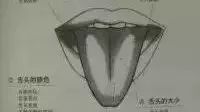1. Symptoms Around the Eyes
Eye lid swelling — Caused by reduced function of internal organs (kidneys, gastrointestinal tract, heart) leading to water retention in the body.
Dark circles — Occur when blood contains excessive old waste, causing the area around the eyes to appear dull (kidneys).
Wrinkles below the eyes — One of the signs of aging.
Sunken eye sockets — Resulting from excessive consumption of body energy.
White inner eyelids — Symptoms of anemia.
Yellowish-white small bumps on the eyelids — Indicate high cholesterol.
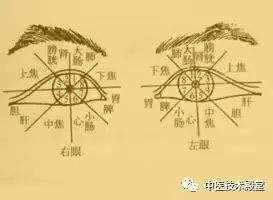
2. Eye Conditions
Yellowing of the whites of the eyes — A warning sign of liver and gallbladder issues (jaundice).
Blood vessels in the whites of the eyes — Indicate excessive tension in the liver, causing blood vessels to dilate.
Eye twitching — A warning sign of declining immunity.
3. Functional Disorders of the Eyes
Inability to fully close the eyes during sleep — Caused by gastrointestinal issues leading to overall muscle weakness.
Easy eye fatigue — Indicates low liver function.
4. Eye Secretions
Eye discharge — Yellow discharge indicates “pus” (inflammation).
Dry eyes — Can easily lead to eye diseases.
Excessive tearing — Occurs when liver function is weakened, leading to easy tearing.
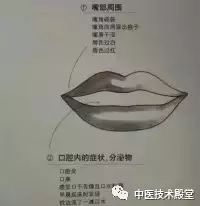
1. Symptoms Around the Mouth
Cracked corners of the mouth — Caused by gastritis leading to false appetite.
Acne around the corners of the mouth — Indicates weak gastrointestinal function.
Dry lips — Can occur due to elevated body temperature.
Pale lips — A warning sign of insufficient blood.
Red lips — Indicates excessive heat accumulation in the body.
2. Oral Symptoms and Secretions
Oral inflammation — Evidence of lowered immunity.
Bad breath — Can have five causes (gastritis, indigestion, rhinitis, gum disease, dental plaque).
Dry mouth with thick saliva — Indicates overall body fluid deficiency.
Finding a pool of saliva on the pillow in the morning — Indicates weakened gastrointestinal function.
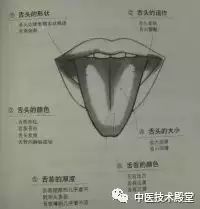
1. Tongue Shape
Jagged edges on the tongue — Indicates swelling due to excess water.
Cracked tongue surface — Indicates insufficient water.
2. Tongue Movement
Slanted tongue — A signal of cerebrovascular issues.
Trembling tongue — Indicates body weakness.
3. Tongue Color
Red tongue body — Indicates elevated body temperature.
Pale tongue body — Indicates body weakness.
Purple tongue — A signal of overly thick blood.
Varicose veins on the tongue’s back — A dangerous signal of poor blood flow.
4. Tongue Size
Large and thick tongue — Indicates excess water in the body.
Small and thin tongue — Indicates insufficient water.
5. Thickness of Tongue Coating
Thick tongue coating, almost obscuring the tongue surface — Indicates gastrointestinal disorders or serious diseases.
Thin tongue coating, almost invisible — Indicates body weakness or allergic constitution.
6. Tongue Coating Color
White tongue coating — Indicates low body temperature and reduced body function.
Yellow tongue coating — Indicates internal “heat”.
Black tongue coating — Indicates extreme physical exhaustion.
1. Nose Condition
Nose size — Indicates strength of respiratory function.
Nostrils flaring — Indicates difficulty in breathing.
2. Nose Skin Condition
Acne on the nose tip — May indicate respiratory issues.
Red nose tip — A signal of excessive alcohol consumption.
3. Nasal Secretions
Nasal secretions can indicate body temperature — Treatment for colds varies based on the type of nasal discharge.
Nasal congestion — If left untreated, can lead to systemic oxygen deficiency.
Frequent nosebleeds — Often caused by weakened gastrointestinal function.
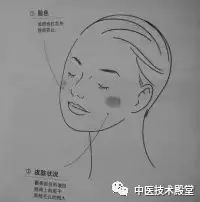
1. Facial Color
Red and hot cheeks — Indicates abnormal temperature regulation.
Pale cheeks — Indicates insufficient oxygen supply in the body.
2. Skin Condition
Wrinkles on the cheekbones — Mainly caused by UV exposure.
Acne on the cheeks — Pay attention to diet or constipation.
Enlarged pores on the cheeks — Reduced sebum is the main cause of enlarged pores.
1. Teeth Condition
Prone to cavities — A precursor to osteoporosis.
Gray teeth — Indicates the formation of cavities inside the teeth.
2. Gum Condition
Swollen gums — Indicates gastritis or fatigue.
Gums easily bleed — Indicates gum inflammation or weak gastrointestinal function.
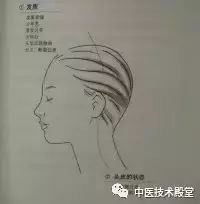
1. Hair Quality
Thinning hair — Indicates a tendency towards anemia or aging.
Juvenile baldness — Excessive fat intake can lead to hair depletion (reproductive organ decline).
Excessive hair loss — Can indicate early signs of disease.
Juvenile white hair — Indicates the relationship between calcium and hair.
Curling hair — Indicates thinning hair.
Excessive split ends and breakage — Can be caused by menstruation leading to anemia.
2. Scalp Condition
Excessive dandruff — Can be classified into “dry” (requiring iron and protein) and “oily” (requiring improved fat metabolism and Vitamin B supplementation).
Soft and elastic scalp — Indicates swelling symptoms.
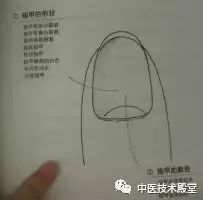
1. Nail Shape
Vertical ridges on nails — Indicate aging-related “wrinkles”.
Horizontal ridges on nails — Indicate “past” (body discomfort) records.
Easy to break nails — Indicate anemia or poor liver function.
Spoon-shaped nails — A signal of body distress (severe anemia, uterine fibroids, endometriosis; detailed examination recommended).
Clubbing nails — Often seen in individuals with heart disease.
Disappearance of the white crescent at the nail base — Indicates physical decline.
Dry nails — Indicate a state of dryness.
2. Nail Color
Red nails — Indicate overly thick blood (pay attention to cardiovascular health).
Purple-black nails — Indicate unclear blood or poor heart function.
White nails — Indicate a tendency towards anemia.

